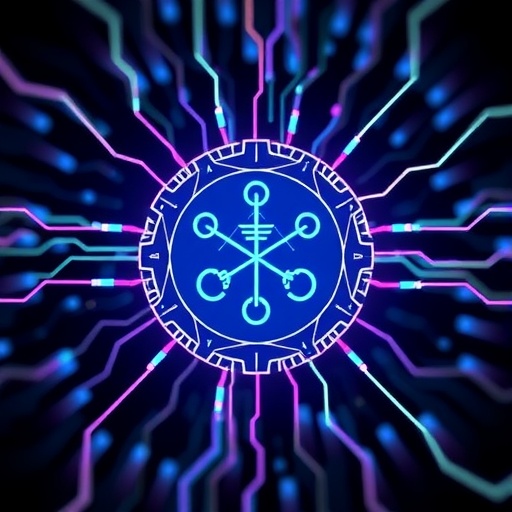In recent years, the Internet of Medical Things (IoMT) has emerged as a revolutionary force in the healthcare domain, connecting devices that collect, transfer, and analyze patient data. Despite the remarkable benefits these technologies bring, critical concerns have emerged regarding the security and privacy of sensitive information transmitted within these integrated systems. With the exponential rise in data generation and the increasing sophistication of cyber threats, traditional security measures are proving inadequate. Therefore, the need for advanced data protection mechanisms in medical settings has garnered significant attention from researchers and healthcare stakeholders alike.
A novel security framework combining blockchain technology and reinforcement learning has been developed to tackle the unique challenges posed by IoMT systems. This cutting-edge approach offers a multidimensional layer of security designed to address not only data integrity but also privacy and real-time monitoring of potential threats. By leveraging the immutable characteristics of blockchain, data can be securely stored and reliably transmitted, reinforcing patient confidentiality. At the same time, reinforcement learning algorithms intelligently adapt to shifting threat landscapes, enhancing the overall resilience of IoMT devices against cyberattacks.
The deployment of this unique framework demonstrates a remarkable improvement in both memory consumption and transaction latency, as compared to existing traditional security methods in healthcare environments. These enhancements are critical in ensuring that healthcare providers can stream data efficiently while maintaining stringent security protocols. The findings highlight not only a heightened capability for data throughput but an improved operational efficiency, essential for seamless integration into the fast-paced world of healthcare delivery.
One of the standout features of this new approach is its effectiveness in identifying address resolution protocol man-in-the-middle attacks, achieving an accuracy rate exceeding 88%. This marks a significant advancement over traditional methods that rely on machine learning techniques, which typically report accuracies in the lower 80s. The reduction in latency—culminating in a snapshot response time of just 45 milliseconds—illustrates the framework’s potential to mitigate threats immediately, ensuring that healthcare systems remain uncompromised during critical operations.
Notably, the newly developed system also surpasses traditional machine learning by reducing false-positive rates to a mere 6%. In contrast, conventional methods often struggle with rates oscillating between 12 to 20%. The efficiency achieved by the framework allows for 80% resource utilization, although it requires distinctively higher memory usage at 320 MB. Despite these demands, the framework performed exceptionally well, especially when tested against the notorious Mirai botnet dataset, underscoring its robust capacity for evolving threat detection.
Central to this innovative framework is an advanced deep Q network based reinforcement learning model. Unlike static models, which calculate fixed responses based on predefined parameters, deep Q networks learn continuously from incoming data, thus fostering an agile response mechanism. This dynamic nature equips the framework to refine its strategies in real-time, addressing newly emerging threats with superior intelligence compared to rigid traditional models.
Hyperledger Fabric serves as the foundational blockchain technology for this system, making it an ideal component due to its efficient resource consumption and higher transaction throughput capabilities. By utilizing Hyperledger Fabric, the framework can secure validation and storage of critical data captured from IoMT sensors, thereby enhancing overall data integrity. As a result, the framework not only supports the existing cybersecurity landscape but also reinforces trust among healthcare providers and patients relying on these technologies.
While the initial results are promising, there are acknowledged limitations that necessitate further research. The current memory and computational requirements of the reinforcement learning framework are substantial, limiting its deployment in resource-constrained environments typical of many healthcare settings. Therefore, optimizing these parameters would enhance the feasibility of real-time implementation across a broader spectrum of IoMT devices.
Future developments may enhance the framework further by integrating sophisticated security measures alongside robust privacy-preserving techniques, such as federated learning. This could prove invaluable in protecting sensitive medical data shared between devices while still allowing for intelligent analytics. The exploration of hybrid models that combine the adaptability of reinforcement learning with the efficiency and simplicity of traditional algorithms could also carve pathways for innovative solutions tailored to the realities of resource-limited healthcare environments.
The urgency for robust security measures cannot be overstated given that IoMT systems are becoming increasingly commonplace in hospitals and healthcare institutions. As connected devices proliferate, so does the volume of sensitive data at risk of being compromised. Thus, frameworks that combine blockchain technology with advanced machine learning methods stand out as vital advancements in the ongoing quest to fortify security in healthcare ecosystems.
The potential for this unique framework to reshape data security in the IoMT landscape is immense, paving the way for increased patient trust and enhanced data-driven healthcare decisions. As innovation continues to evolve in this space, the adoption of secure, adaptive technologies will be paramount in ensuring that IoMT can be leveraged to its fullest potential, ultimately improving patient outcomes and amplifying the capabilities of healthcare providers worldwide.
Through these advancements, stakeholders in healthcare are presented with not just the tools to protect data but also the insights needed to harness the power of connected devices. In a world where data breaches can have unprecedented consequences, the evolution of privacy-preserving technologies is pivotal. Researchers are now poised to redefine the security landscape, promising to provide healthcare systems with solutions tailored for both efficacy and safety, where innovative technology meets the urgent demands of patient care.
Notably, the publication of this groundbreaking research reflects a broader movement among scientists and engineers who are uniting to enhance security and resilience throughout the healthcare sector. Moving forward, the integration of interdisciplinary approaches will become key to harnessing machine learning, blockchain, and IoMT technologies in synergistic ways that spell success for the future of healthcare.
Subject of Research: Not applicable
Article Title: Privacy-Preserving Strategies in the Internet of Medical Things Using Reinforcement Learning and Blockchain
News Publication Date: 14-Jul-2025
Web References: 10.34133/icomputing.0133
References: N/A
Image Credits: Dounia Doha et al.
Keywords
Applied sciences and engineering, Systems theory, Adaptive systems, Machine learning, Deep learning, Computer science, Cybersecurity




